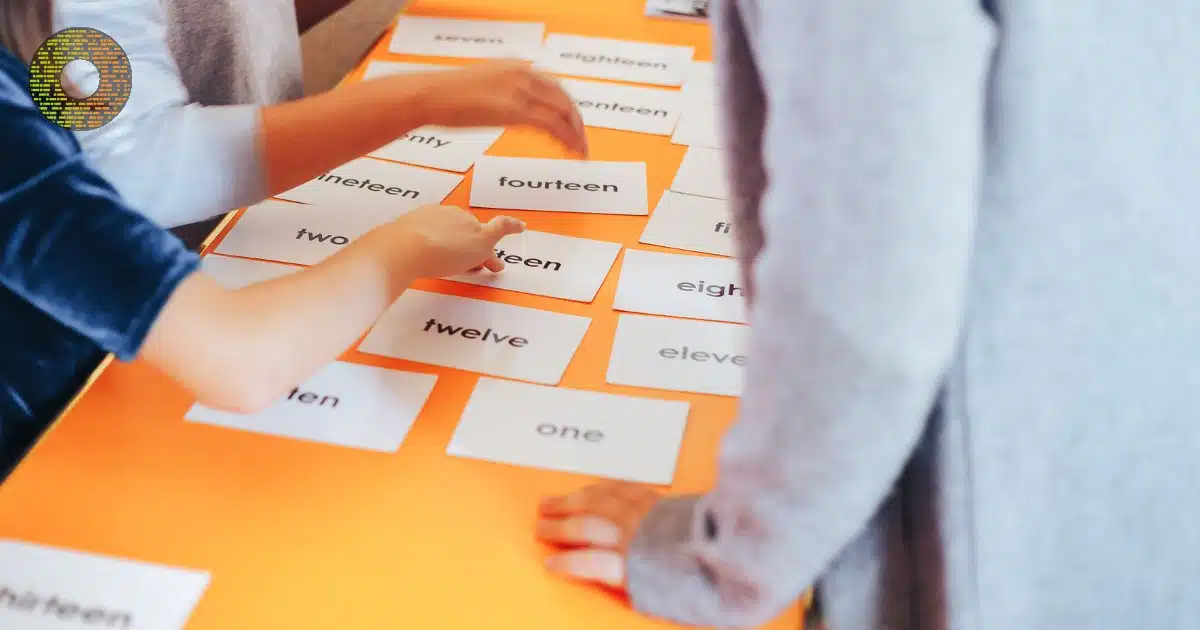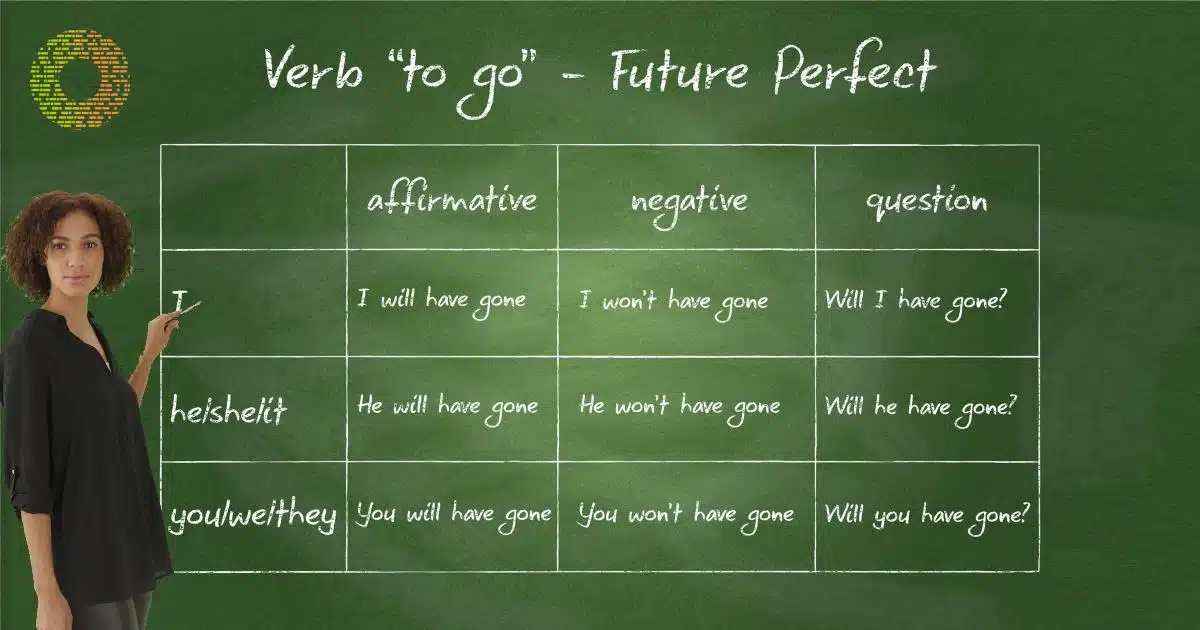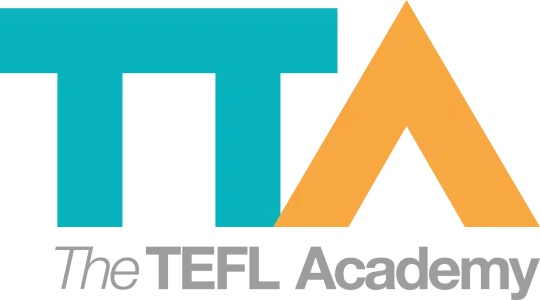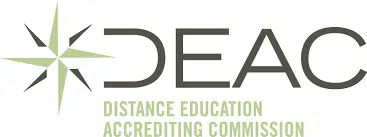How To Teach Grammar In The EFL Classroom
Join a global community of over 200,000 TEFL teachers working throughout the world! Enrol me!
- Blog
- Classroom Considerations, Teacher's Toolkit
- How To Teach Grammar In The EFL Classroom
Conditionals. Adverbials. The present perfect. Uncountable nouns. Continuous tenses.
Does just looking at those terms gives us the shivers?!
Grammar is one of those things that can strike fear into the hearts of both students and teachers. Students, as you can imagine, may have had bad experiences with mind-numbingly boring grammar lessons. Teachers, on the other hand, are afraid of teaching those very same mind-numbingly boring lessons but they also realise they do need to teach grammar. To make matters worse, the majority of English as a foreign language (EFL) teachers don’t themselves really know the grammar they are supposed to teach! Talk about a pickle!
So let’s look at how to teach grammar in the EFL classroom.
Do I need to be a grammar fundi to teach grammar effectively?
Let’s get one thing out of the way first.
Yes, as a teacher it is necessary for you to know English grammar. But, to be quite honest, there is only so much you need to know. To be precise, you only need to know as much as your students. English grammar is a complex beast, and if you are not familiar with its complexities now, there is no way you’ll be able to learn it in a day. It takes years of experience to get to know English grammar fully.
When discussing how to teach grammar in the EFL classroom, let’s get this clear – it’s totally possible to break it down into chunks. If you are teaching your Intermediate learners the second conditional, then you need to know all about the second conditional. If you are teaching your Pre-Intermediate students comparative adjectives, then you need to know all about comparative adjectives. And if you are teaching your Advanced students inversion with negative adverbials, then you need to know all about inversion with negative adverbials.

Break it down
When we break it down like this, it becomes much more manageable, mostly because learning a particular structure is as simple as reading the student’s coursebook. In the coursebook, you’ll find simple explanations, example sentences, and practice exercises: everything you need to teach yourself. If it’s been written for your students to understand, there’s no doubt you’ll be able to grasp the subject matter quickly. And if you’re still a little confused – and remember, if you’re confused, your students will be confused! – then you can easily check a grammar reference book, do a Google search or ask for advice in the staff room.
So fear not if your grammar is a little rusty. There is no need for you to do a TEFL grammar course before stepping into the classroom. Your TEFL course should provide you with an overview of the English language system anyway and a top-up course won’t do you any harm, but you do not need to do a stand-alone English grammar course to learn how to teach grammar.
Now let’s get down to business.
Teaching grammar: approaches and methods
There are many different approaches and methods of teaching English grammar in the EFL classroom. When thinking about how to teach grammar in the EFL classroom, you’ll need to consider your students, your teaching context, and the language structure.

An age-old approach to teaching grammar: the Grammar-Translation method
Back in the day, teaching grammar through the Grammar Translation method was how it was done.
Learners would look at a text in English and compare it to the same text translated into their language. They could then look at the similarities and differences between the two texts. In this way, it was hoped they would learn the rules of English grammar and how to use them.
This method was utilised for many years, but lately, we have realised the shortcomings of this approach in teaching English grammar. For many languages, there are no direct translations of English grammatical items, so translation can be a messy business. While there is nothing wrong with using translation in the EFL classroom, we would prefer it if our students actually learned to think in English rather than think in their own language and then translate.
Read more: Using Translation in the TEFL Classroom

The deductive approach to teaching grammar
One approach is known as the deductive approach.
This is when the students are given grammar rules by the teacher. In other words, the teacher will explain the rules of the language structure, give example sentences, and ensure understanding. The students will then do a set of controlled and freer practice activities to practice the language structure.
You might recognise this as part of a PPP (Presentation, Production and Practice) lesson plan model.

The inductive approach to teaching grammar
In contrast, the inductive approach requires the learners to figure out the rules for themselves. The teacher will present the target language structure along with example sentences – or in a context – and the learners must work out for themselves what the rules of usage are. The teacher may ask guided questions to help them along but doesn’t explain the rules explicitly. After the rules have been clarified, the students will do practice exercises to practice the language.
This is also known as guided discovery.
Read more: Guided Discovery in the EFL Classroom
A few miscellaneous methods of teaching grammar
There are a number of ways these approaches are realised practically in the classroom. We’ve already mentioned the PPP model.
Then there is also Total Physical Response or TPR. TPR uses physical actions to teach grammar. In practice, the teacher will give commands or directions to the learners who must respond appropriately. The actions are very good for teaching verbs and the continuous tenses. TPR works especially well with kinaesthetic learners.
Cuisenaire rods
If you’re a fan of the Silent Way, then you could teach grammar through the use of blocks called Cuisenaire rods. Cuisenaire rods are blocks of different sizes and different colours. They are a great way to give a visual representation of a grammatical structure and its patterns. As you can imagine, Cuisenaire rods are great for visual students.

All in all, the thought of how to teach grammar can be enough to keep TEFL teachers awake at night, but it shouldn’t be. Teaching grammar can be daunting at first but after some practice you’ll feel more comfortable. After all, once you’ve taught the present perfect once, you’ll be more prepared teaching it a second time…and you’ll be a professional when you teach it the 54th time! So don’t let teaching grammar put you off teaching English as a foreign language. All TEFL teachers are in the same boat when they start teaching, even native speakers. So trust in your TEFL training, always make sure you’re one step ahead of your students, and soon you’ll be looking forward to your grammar lessons!
Get Social
Follow us on social networks, join our newsletter - get the latest news and early discounts

Sign up to our newsletter
Follow us on social networks, sign up to our e-newsletters – get the latest news and early discounts
Accreditation Partners
The TEFL Academy was the world’s first TEFL course provider to receive official recognition from government regulated awarding bodies in both the USA and UK. This means when you graduate you’ll hold a globally recognised Level 3 (120hr) Certificate or Level 5 (168hr) Diploma, meaning you can find work anywhere and apply for jobs immediately.
Terms and Conditions
1. Our Contract with you
- These are the terms and conditions upon which The TEFL Academy will provide one of the following TEFL
courses to you (the “Terms”):Name of course Description Online Level 5 TEFL Course 168-hour Online Level 5 TEFL & grammar course (Plus three free 30-hour Top-Up Online Courses) Online Level 3 TEFL Course 120-hour Online Level 3 TEFL & grammar course (Plus three free 30-hour Top-Up Online Courses) Top-Up Courses 30-hour Online Teaching Young Learners, Teaching Business English and Teaching Online & 1:1 Courses 10hr Online Teaching Practice Course 10 hours of webinar teaching practice course (Learn about classroom management and Q&A with a TEFL expert) Observed Teaching Practice Course 40-hour observed teaching practice course - Details of the TEFL Courses can be found here.
- Please read these Terms carefully before you submit your order for enrolment in a TEFL Course to us. These Terms
tell you who we are, how we will provide services to you, how you and we may change or end the contract, what to do
if there is a problem and other important information. You must indicate your acceptance of these Terms before you
can submit your order for a course with The TEFL Academy. - Our acceptance of your booking will take place when you receive a confirmation email from us to accept your order,
at which point a contract will come into existence between you and us. - Once you have received an email acceptance of your order, these Terms will form the basis of the contract between
you, the student, and us The TEFL Academy, to the exclusion of all other terms and conditions. Any variations to
these Terms shall have no effect unless agreed in writing. - All students studying the combined course option must print their confirmation email and bring it to the first day
of their course or have the confirmation email accessible on a smartphone.
2. Information about us
- We are ELEARNING FUTURES LTD (trading as The TEFL Academy) a company registered in the United Kingdom.
Registered company number 13725845, Palmeira Avenue Mansions, 19 Church Road, Hove, BN3 2FA. - Our USA address is: The TEFL Academy, 954 Lexington Ave, #1135 New York, NY 10021, USA.
- You can contact us by telephoning our customer service team at +1 347 434 9694 or by emailing us at [email protected].
3. Terms
- These Terms shall commence upon the date you receive a confirmation email from us to accept your order and
shall continue for the duration of the TEFL Course or until cancelled pursuant to these Terms. - You will be obliged to comply with these Terms for the duration of the TEFL Course you are enrolled in unless
the course is cancelled early in accordance with these Terms. Any terms expressed to survive termination shall
so survive and shall be enforceable by us for a period of 6 years after termination. - The duration of the TEFL Courses shall be as follows:
Name of course Duration Combined Level 5 TEFL Course 6 months Online Level 5 TEFL Course 6 months Online Level 3 TEFL Course 6 months 10hr Online Teaching Practice Course 10 hours Top-up courses 6 weeks Observed Teaching Practice Course 2 years - If you need a course extension, this can be arranged at a fee. Please contact [email protected] or call +1 347 434 9694
for more details and information on how to apply for an extension. - The fees for extensions are set out below.
Extension type Extension fee pre-expiry Extension fee post-expiry Level 3 & 5 TEFL Course 30 day extension $72 $95 Level 3 & 5 TEFL Course 90 day extension $103 $119 Top-up Course 30 day extension $36 n/a Observed Teaching Practice Course No fee No fee
4. Price
- The prices for the TEFL Courses are as follows:
Name of course Price Combined Level 5 TEFL Course $988 Online Level 5 TEFL Course $563 Online Level 3 TEFL Course $413 10hr Online Teaching Practice Course $220 Top-up courses $195 Observed Teaching Practice Course $275 - The TEFL Academy reserves the right to change our course prices or other services on our website at any time
at our sole discretion, and such amended prices or services shall be kept up to date on our website and
available here. Our website shall also maintain up to date details of our special offers here. - The fees for extensions or cancellations can be found at clauses 3.5, 6.2 and 7.
- For classroom-based courses. transport to and accommodation at the venue is not included in the price of the
combined TEFL course. Food and other related costs are not included in the combined TEFL course price.
5. Payment
- All payments can be made by credit or debit card through our payment processor WorldPay or through Paypal. The
TEFL Academy does not process any card payments directly on our server. The payment page on the website will
direct you to a separate Paypal or Worldpay page depending on the payment option selected by you. We do not
store or process personal financial information. - If the date for your chosen course is more than two weeks away, you have the option of paying a
deposit. You will be invoiced for the remaining balance with a payment link to the email address used to make
your booking. The remaining balance must be paid in full no longer than one week before the course date. All
balance payments are non-refundable. Access to the online course is provided on receipt of the full balance
payment.
6. Changing or Cancelling your course
- If for whatever reason you wish to change the date of your course, you must notify us of the change at least
seven days prior to the course date. Any changes requested will only be accepted for available dates within the
next three months from the original course date and must be at the same location. All changes are subject to
availability and only one change per booking will be accepted. - Please note: Subject to clause 7, under no circumstances whatsoever will changes or cancellations be accepted
less than 7 days before the course date. Any student who wishes to change course or cancel within the 7 days of
the course date, for whatever reason, will forfeit their course fee.
7. Right of Withdrawal
- You shall have a period of 14 days from the day of the conclusion of the contract to withdraw from the
contract (cancelling your enrolment) for no reason, and without incurring any costs other than those provided
for in clause 6.2 where applicable. - If you wish to exercise your right of withdrawal, you must inform The TEFL Academy of your decision to
withdraw from the contract within this 14 days by making a request in writing via our refund form (found here), or by making a statement in
writing setting out your decision to withdraw from the contract. - The exercise of the right of withdrawal shall terminate the obligations of the parties to perform the
contract. The TEFL Academy will reimburse you in respect of all payments received from you within 14 days of
withdrawal using the same means of payment as the you used for the initial transaction.
8. Course Cancellation by The TEFL Academy
- Where a course cannot take place due to trainer illness or other circumstances beyond our control, the course
may be cancelled by us. The TEFL Academy will endeavour to provide an alternative trainer but this is not always
possible. We will try and arrange an alternative date, but if any new arrangements are not suitable, a full
refund will be offered. In these circumstances we accept no liability for any loss or expenses incurred by you
including, without limitation, any travel, accommodation costs or loss of earnings. - In the event that a classroom course cannot take place as a result of, or connected with, delay or
interruption to travel services, adverse weather conditions, civil disturbance, industrial action, strikes,
wars, floods, sickness, pandemics, epidemics or any other commonly accepted event of force majeure, The TEFL
Academy will endeavour to offer a classroom course at an alternative date or will seek to transfer your booking
to the online course or failing these options will transfer your booking to the reserves list (where you will be
placed on a list until you select an alternative suitable classroom date and can continue with the online
element of the course). A refund (including the difference in cost between different course options, if and
where applicable) will not be permitted in any of the above circumstances, unless the cancellation of the course
for these reasons occurs within 14 days from booking.
9. Access to Course and Materials
- The 6-month enrolment on the online course starts from the date that full payment for the course has been
received by The TEFL Academy. - All assignments must be submitted no later than 2 weeks before the enrolment end date. Students who wish to
apply for an extension to the enrolment end date, may incur additional fees. An extension will run from the
previous enrolment end date or if you are paying the post expiry fee, from the date the full extension payment
is received by The TEFL Academy. - Access to the online course materials will cease upon expiration of enrolment.
- All online courses require a computing device and stable internet connection. The full requirements can be
found here. - All course data, including test scores and assignments, will be stored no more than 12 months from the final day of enrolment on the online course. Students will be notified by email of this deadline 30 days before deletion. Students who wish to retain their online course content beyond the 12-month storage date will be required to purchase an extension as per clauses 3 and 4.
10. Assignments and Exams
- As part of some TEFL Courses you will be required to prepare and submit assignments. If you do not pass an
assignment you can resubmit an assignment in accordance with clause 10.2. - You can submit each assignment up to three times. (i.e. after the first submission of an assignment, you may
re-submit the assignment a two further times up to a total of three submissions for one assignment). - If you do not pass an assignment, you will not receive a grade, but you will be given feedback as to why you
have not passed and you shall be given the opportunity to re-submit your work up to a total of 3 submissions per
assignment in accordance with clause 10.2. You will not be able to resubmit an assignment which you have been
awarded a pass grade in. - If you have a basis to believe your work has not been fairly assessed, you can request a re-mark via the tutor
support ticket platform. Due to the high number of students we cannot look at any assignment in advance of an
actual submission. - You should submit your final assignment 2 weeks before your end date to allow time for marking and the
possible need for re-submission. - Please be aware that if you have not completed all required assignments and allowed sufficient time for
marking before your end-date, you will need to apply for an extension. - You are entitled to sit exams as many times as you need to in order to pass the exam. If you pass the exam you
cannot thereafter seek to resit the exam.
11. Failing the Course
- The TEFL Academy offers a guaranteed pass, or your money back guarantee. You can retake the exams as many times as needed in order to pass. If you fail to achieve a pass on any assignments after your third attempt we will provide you with a full refund. A full refund will not be provided in accordance with clauses 11.4, 11.5 & 11.8.
- Native speakers of English will typically be above the minimum standard of English for this course.
- Non-native speakers should have an English level of C1 (Advanced), as a minimum to commence the course.
Students may test their English level here: https://learnenglish.britishcouncil.org/en/content. - Students found not to have a C1 level of English will likely fail the course and not complete the
qualification. However, it is up to each prospective student to determine for themselves whether or not they
wish to commence a course even where they do not have a minimum of C1 level English. For the avoidance of any
doubt no refund will be provided for a student failing the course in any circumstances. - Any student who fails or is removed from the course as a result of confirmed plagiarism (in accordance with
clause 11.6) will be removed immediately from the course without refund. All extension payments are non-refundable. - Where an assignment marker finds evidence that indicates that plagiarism may have occurred within a submitted
assignment, this will be escalated to an Internal Quality Assurance Manager for investigation who will compare
the submitted assignment to the source it is believed to be plagiarised from. The Internal Quality Assurance
Manager will make an assessment as to whether they consider plagiarism to have occurred. In the event the
Internal Quality Assurance Manager decides that plagiarism has occurred, they will prepare and provide to you a
detailed report outlining the reasons for their decision along with a letter explaining your removal from the
course. Should you wish to dispute this decision, you can do so in accordance with The TEFL Academy’s Appeals
policy for students which can be found here. - If you do not pass an assignment after submitting it up to three times in accordance with clause 10.2 you will
be deemed to have failed the course. Should you wish to dispute this decision, you can do so in accordance with
The TEFL Academy’s Appeals policy for students which can be found here. If you fail the course due to not passing your assignments you will be provided with a full refund. As extensions are an optional expenditure, any extension payments will not be refunded. - In order for you to legitimately fail the course, a clear attempt to answer the assignment requirements must be made. This requires uploading the required assignment templates for each submission, and an attempt to address feedback and recommendations provided by the tutor for the second and third attempts. If we deem your attempts at the assignments to not be genuine a refund will not be provided.
- Any student who has been removed from their course due to plagiarism will be banned indefinitely from enrolling in any course with The TEFL Academy.
12. Liability
- The TEFL Academy accepts no liability, nor shall it have any liability whether in contract, tort, under
statute or otherwise, for any loss, damage, costs, liabilities or additional expense arising from, or in
connection with, any delay or interruption to travel services, weather conditions, civil disturbance, industrial
action, strikes, wars, floods, sickness or other events of force majeure. Such losses or additional expenses are
your responsibility. Force majeure (for the purposes of this clause) means any unusual and/or unforeseeable
circumstances such as war or the threat of war, riots, terrorist activity, civil strife, pandemics, epidemics,
industrial disputes, natural or nuclear disaster, fire, flood or adverse weather conditions. - The TEFL Academy accepts no responsibility, nor shall it have any liability whether in contract, tort, under
statute or otherwise, for death, bodily injury or illness caused to you or any other person included on the
booking, except where it arises from any negligent act or omission of The TEFL Academy. - The TEFL Academy accepts no liability, nor shall it have any liability whether in contract, tort, under
statute or otherwise, any technical or IT issues arising from or connected with the usage of the online courses
such as systems crashing. - Our internship/volunteer opportunities and the jobs posted on our jobs board are provided by third parties.
Although we will endeavour to assist students, we accept no liability for the actions or conduct of any
third-party organisation. - The TEFL Academy endeavours to ensure all assignments are marked promptly. However, there can be delays in
busier times or due to moderation requests from our accrediting body. The TEFL Academy accepts no responsibility for any loss or other circumstances resulting or arising from such delays. - The TEFL Academy accepts no liability, nor shall it have any liability whether in contract, tort, under
statute or otherwise, for any loss or additional expense arising for students where they fail the course whether
such failure is alleged to be due to trainers allegedly lacking competency, for plagiarism or for any other
reason whatsoever.
13. Complaints Handling Policy
- If you have any questions or complaints about the TEFL Course, please contact us. You can telephone our
customer service team at +1 347 434 9694 or write to us at [email protected] or The TEFL Academy, Suite 4 The Hub, 3 Drove Road, Newhaven, BN9 0AD, United Kingdom. - If your complaint is not dealt to your satisfaction with you may make a complaint to the course accrediting
body. You can find the contact details for the accrediting body in the The TEFL Academy’s Appeals Policy which
can be found here.
14. Conduct
- Our staff have the right not to be subjected to aggressive, abusive or offensive language or behaviour,
regardless of the circumstances. Examples of this behaviour include but are not limited to; threats of physical
violence; swearing; inappropriate cultural, racial or religious references; rudeness, including derogatory
remarks. The TEFL Academy practises a zero-tolerance policy in relation to such behaviour. All students are
required at all times to conduct themselves in an appropriate manner including in their dealings with other
students, staff and external organisations. Disruptive or antisocial behaviour could result in being asked to
leave the course. - Any student who fails or is removed from the course by failing to meet the academic standards or through being
found guilty of plagiarism will be removed immediately from the course without refund.
15. Data Protection
- Any use which we make of your personal data which you may provide in using The TEFL Academy site will be in
accordance with all applicable data protection laws and The TEFL Academy Privacy Policy which can be found here. - Please read The TEFL Academy Privacy Policy carefully as it contains important information on how the TEFL
Academy uses your personal information.
16. Governing Law
- This Agreement is governed by the laws of England & Wales.
- Any claims made in connection with these Terms shall be subject to English law and all proceedings shall be
within the sole domain of the English courts.
17. Acceptance of these Terms
- By verbally agreeing on the telephone or having clicked ‘Enrol Now’ on the website you accept these Terms
including all payment obligations and you are acknowledging that placing an order creates an obligation to pay
for the services ordered and confirms that you have read, agreed to and accepted these terms. The person who
agrees to the enrolment agreement, does so on behalf of all the individuals included on it, so that all are
bound by the enrolment conditions.
Privacy Policy
LAST UPDATED: 19th July 2023
Please read all of the following information carefully.
By using our site and/or registering with us, you are agreeing to the terms of this Policy.
ELEARNING FUTURES LTD (“we”) are committed to protecting and respecting your privacy.
ELEARNING FUTURES LTD takes the security of and our legal responsibilities around your personal data seriously. This statement explains relevant information about our processing of your personal data collected via this website (“website” or “site”).We aim to always respect your data protection rights in compliance with the latest Data Protection Laws, including the GDPR.
Who we are
- This website is owned and operated by ELEARNING FUTURES LTD , (we) a limited company registered in the United Kingdom.
Registered company number 13725845, Palmeira Avenue Mansions, 19 Church Road, Hove, BN3 2FA. - This Policy sets out the basis on which any personal data we collect from you, or that you provide to us, will be processed by us.
- Our Data Protection Officer (DPO) can be contacted by email at [email protected]
- This policy (and any other documents referred to on it) sets out the basis on which any personal data we collect from you, or that you provide to us, will be processed by us. Please read the following carefully to understand our practices regarding your personal data and how we will treat it.
- For the purpose of the General Data Protection Regulation, the data controller is ELEARNING FUTURES LTD.
Contact Details
- ELEARNING FUTURES LTD collects and processes personal information for a variety of reasons. If you wish to communicate with us about this privacy notice, or any issue relating to information governance or data protection, please contact us using the following details: By post:
Information Governance & Risk Management Team
ELEARNING FUTURES LTD,
Palmeira Avenue Mansions,
19 Church Road,
Hove,
BN3 2FA,
United Kingdom
Email: [email protected]
International transfers
- ELEARNING FUTURES LTD shares personal information within the wider ELEARNING FUTURES LTD group of entities situated both within and outside the EU. We do this under a data-sharing agreement that includes the appropriate EU model international data transfer clauses to make sure your personal information is protected, no matter which entity in the ELEARNING FUTURES LTD group holds that information.
- Where ELEARNING FUTURES LTD makes transfers of personal information outside the ELEARNING FUTURES LTD Group to another organisation we rely on the use of the EU model international data transfer clauses where the country the organisation is situated in is not listed as ‘adequate’ by the European Commission.
Collection and Use of your data
- Some data will be collected automatically by our site, other data will only be collected if you voluntarily submit it and consent to us using it for the purposes set out in section 5, for example, when signing up for an account. depending upon your use of our site, we may collect some or all of the following data: Name, address, bank details and so forth.
- All personal data is stored securely in accordance with the EU General Data Protection Regulation (Regulation (EU) 2016/679) (GDPR). For more details on security see section 6, below.
- We use your data to provide the best possible services to you. This includes:
- Providing and managing your account;
- Providing and managing your access to our site;
- Personalising and tailoring your experience on our site;
- Supplying our services to you;
- Personalising and tailoring our services for you;
- Responding to communications from you;
- Supplying you with email newsletters or alerts etc. that you have subscribed to, you may unsubscribe or opt-out at any time by clicking on the ‘unsubscribe to the list’ link at the footer of our email newsletters or by contacting our Customer Services Team at [email protected]
- Market research;
- Analysing your use of our site and gathering feedback to enable us to continually improve our site and your user experience;
- Ensuring our investigations and appeals are handled accurately and fairly;
In some cases, such as during an investigation or appeal, we may use public data such as social media accounts or review sites in order to ensure accuracy and fairness.
- In some cases, the collection of data may be a statutory or contractual requirement, and we will be limited in the services we can provide you without your consent, for us to be able to use such data.
- With your permission and/or where permitted by law, we may also use your data for marketing purposes which may include contacting you by email AND/OR telephone AND/OR text message AND/OR post with information, news and offers on our services. We will not, however, send you any unsolicited marketing or spam and will take all reasonable steps to ensure that we fully protect your rights and comply with our obligations under the GDPR and the Privacy and Electronic Communications (EC Directive) Regulations 2003, as amended in 2004, 2011 and 2015.
- In order to facilitate completion of enrolment, we do collect data from our online booking forms and may remind you of your saved order so that you can complete your enrolment
- Under GDPR we will ensure that your personal data is processed lawfully, fairly, and transparently, without adversely affecting your rights. We will only process your personal data if at least one of the following bases applies:
- you have given consent to the processing of your personal data for one or more specific purposes;
- processing is necessary for the performance of a contract to which you are a party or in order to take steps at the request of you prior to entering into a contract;
- processing is necessary for compliance with a legal obligation to which we are subject;
- processing is necessary to protect the vital interests of you or of another natural person;
- processing is necessary for the performance of a task carried out in the public interest or the exercise of official authority vested in the controller; and/or
- processing is necessary for the legitimate interests pursued by us or by a third party, except where such interests are overridden by the fundamental rights and freedoms of the data subject which require protection of personal data, in particular where the data subject is a child.
We collect and use personal information to offer people information, products and services. This policy will apply in all locations where we operate to all forms of information and to all systems used to collect, store, process or transfer information.
With your prior agreement, we may share your data, such as name, email and CV, with potential employers.
- ELEARNING FUTURES LTD is committed to:
- performing privacy impact assessments to protect the privacy and rights of its customers and employees
- protecting the confidentiality, integrity and availability of the information it collects, stores, transfers and processes in accordance with law and international good practice, and meeting its legal requirements and contractual obligations
- explaining why it needs personal information, only asking for the personal information it needs and only sharing personal information within the ELEARNING FUTURES LTD and with other organisations as necessary or where the person concerned has given their consent
- allowing people to request access to the personal information it holds on them and to complain if they believe their information has been mishandled
- not keep personal information for longer than necessary
- taking measures to protect the rights and freedoms of individuals whose personal information may be transferred to countries with differing data protection laws
- ensuring that actual or suspected breaches of information security are reported and investigated
- assessing and measuring the maturity of its information security controls annually
- applying these standards to its supply chain and delivery partners.
We will provide adequate and appropriate resources to implement this policy and will ensure it is communicated and understood.
Recipients
- We also use other organisations to process your personal information in order to carry out services on our behalf. We use them to:
- Provide customer service, surveys and marketing
- Personalise our services
- Process payments
- Carry out fraud and other legal investigations
Where we use another organisation, we make sure that your personal information is protected and remains in our control.
- We also, in certain situations, share personal information with government bodies and law enforcement bodies. Where we do share personal information with these types of organisations we’ll make sure it’s protected, as far as it is reasonably possible.
Marketing
We’ll use your personal information to send you direct marketing and to better identify products and services that interest you. We do that if you’re one of our customers or if you’ve been in touch with us another way (such as registering to attend an ELEARNING FUTURES LTD event).
This means we’ll:
- create a profile about you to better understand you as a customer and tailor the communications we send you (including our marketing messages);
- tell you about other products and services you might be interested in;
- try to identify products and services you’re interested in; and
We use the following for marketing and to identify the products and services you’re interested in.
- Your contact details. This includes your name, gender, address, phone number, date of birth and email address.
- Information from cookies and tags placed on your connected devices.
- Information from other organisations such as aggregated demographic data and publicly available sources like the electoral roll and business directories.
- Details of the products and services you’ve bought and how you use them.
We’ll send you information (about the products and services we provide) by phone, post, email, text message, online banner advertising. We also use the information we have about you to personalise these messages wherever we can as we believe it is important to make them relevant to you. We do this because we have a legitimate business interest in keeping you up to date with our products and services. We also check that you are happy for us to send you marketing messages before we do so. In each message we send, you also have the option to opt-out.
We’ll only market other organisations’ products and services if you have said it is OK for us to do so.
You can ask us to stop sending you marketing information or withdraw your permission at any time.
Retention
ELEARNING FUTURES LTD retains personal information in line with our corporate retention requirements. Your data will be stored within the European Economic Area (“the EEA”) (The EEA consists of all EU member states, plus Norway, Iceland and Liechtenstein). However, in some circumstances, part or all of your data may be stored or transferred outside of the European Economic Area (“the EEA”). You are deemed to accept and agree to this by using our site and submitting information to us. If we do store or transfer data outside the EEA, we will take all reasonable steps to ensure that your data is treated as safely and securely as it would be within the EEA and under the GDPR. Such steps may include, but not be limited to, the use of legally binding contractual terms between us and any third parties we engage with, and the use of the EU-approved Model Contractual Arrangements. If we intend at any time to transfer any of your data outside the EEA, we will always obtain your consent beforehand.
Right to access personal information
- Under the law, any individual has a right to ask for a copy of the personal information held about them. This means that you can ask for the information that ELEARNING FUTURES LTD holds about you. This is known as the right of ‘subject access’.
- When making a request you will need to give us:
- a request in writing (by post or by email)
- We may need to ask you to provide:
- proof of your identity
- proof of your home address
- any information that we reasonably need to locate the information you have requested (for example details of the ELEARNING FUTURES LTD offices or staff that you have had contact with and when)
We will not start looking for your information until we receive all of the above. In order to submit your request, or for help making a request, please contact us.
Rights concerning the processing of your personal information
- Right to restrict processing of personal information
- In some situations, you have the right to require us to restrict the processing of your personal information. We may restrict your personal information by temporarily moving the information to another processing system, making the information unavailable to users, or temporarily removing published information from a website. We may also use technical methods to ensure the personal information is not subject to further processing and cannot be changed. When we have restricted processing of personal information, this will be clearly indicated on our systems.
- You can require us to restrict processing in the following circumstances:
- You are concerned that the information we hold about you is inaccurate. You can ask us to restrict the information until we can determine whether the information is accurate or inaccurate.
- We are processing your personal data unlawfully and you do not want us to delete the information but restrict it instead.
- We no longer need the information for the purposes for which we collected it, but they are needed by you for the establishment, exercise or defence of legal claims.
- You have objected to the processing (see below), and we need to decide whether the legitimate grounds we have to process the information override your legitimate interests.
Processing you think is unlawful
- If you tell us that you think we are processing your personal information unlawfully, but you do not want the information to be erased, you have the right to require us to restrict the processing of that information.
- We will ask you for an explanation about why you think the processing is unlawful, and may also ask that you provide evidence to support this view.
Processing of personal information you think is inaccurate
- You can tell us if you think the personal information we are processing about you is factually inaccurate. You can require us to restrict how we use your personal information until we can verify the accuracy of the information. We will ask you for an explanation about why you think the information is inaccurate, and may also ask that you provide some supporting evidence of the alleged inaccuracy.
- If we find that the personal information we are processing about you is inaccurate, we will take appropriate steps to correct the information.
Personal information is no longer needed by ELEARNING FUTURES LTD but needed by you in connection with a legal claim
- In most circumstances, we will securely delete or dispose of personal information when we no longer need it for our legitimate business purposes. Our approach to retention is outlined in our corporate retention schedules.
- However, if the personal information we no longer need would assist you in establishing, exercising or defending a legal claim, you can require us to keep the information for as long as necessary. We may ask you to provide an explanation and any available supporting evidence that a legal claim is ongoing or contemplated.
Right to erasure of personal data (“the right to be forgotten”)
In the following circumstances, you have the right to require that ELEARNING FUTURES LTD securely deletes or destroys your personal information:
- If the personal information we hold about you is no longer necessary for the purposes for which we originally collected it.
- The processing is based on consent – if you have previously given your consent to ELEARNING FUTURES LTD collecting and processing your personal information, and you notify us that you withdraw your consent. Please note: withdrawing your consent does not mean the processing of your personal data which occurred before the withdrawal was unlawful.
- We are processing your personal information for direct marketing purposes, and you want us to stop.
- If you think ELEARNING FUTURES LTD has processed your personal information unlawfully.
If you think any of the above situations apply, we may ask you for an explanation and further information to verify this.
Right to object to processing
You have the right to object to the ELEARNING FUTURES LTD processing your personal data in the following circumstances:
Personal information used for direct marketing
If we are using your personal information to send you direct marketing, you have the right to object at any time. If you exercise this right, we will stop processing your personal information for direct marketing purposes. However, we may keep your information on a “suppression list” to ensure your information is not added to any marketing lists at some point in the future.
Automated decision making and profiling
- ‘Profiling’ is the automated use of personal data held on a computer to analyse or predict things that have a legal effect, or other similarly significant effects, on the individual. Examples would include economic situation, health, personal preferences or interests and location. You have the right not to be subject to a solely automated decision (that is, a decision made electronically, with no human intervention), and this may include profiling (although there is no general right to object to profiling). If you are concerned the ELEARNING FUTURES LTD has made a solely automated decision about you, you can object.
- Please note, ELEARNING FUTURES LTD is allowed to carry out automated decisions with no human intervention where you have given your explicit consent to this processing (although you have the right to withdraw your consent).
- We are also permitted to make automated decisions with no human intervention in the following circumstances:
- The automated decision is necessary to enter into, or perform a contract, or complete a contract involving you and the ELEARNING FUTURES LTD.
- The automated decision is allowed under a law passed at the European Union level, or at the level of the European Union or EEA member state level (i.e., is allowed under national law). The law will provide safeguards to protect your rights and freedoms.
However, you still have a general right to object in both of the above circumstances, providing reasons why you think the processing is having a negative effect on you. If you do object, we will carefully consider your reasons, and decide whether to review the decision-making process in your specific case.
Right to data portability
- If you have provided your information to ELEARNING FUTURES LTD, you have the right to request and receive a copy of that information in a structured, commonly used and machine-readable format.
- You also have the right to ask us to send the information we hold about you to another organisation.
- There are some situations in which the right to data portability does not apply. For further information, please contact us.
Exercising your rights concerning the processing of your personal information
If you wish to exercise any of the above rights concerning the way in which we process your personal information, please contact:
By post:
Risk Management Team
ELEARNING FUTURES LTD,
Suite 101b,
21-22 Old Steine,
Brighton,
BN1 1EL,
United Kingdom
Email: [email protected]
Your right to complain to a national data protection regulator (data protection supervisory authority)
- If you think we have processed your personal information unfairly or unlawfully, or we have not complied with your rights under GDPR, you have the right to complain to a national data protection regulator.
- Complaints about how we process your personal information can be considered by the data protection regulator.
Changes to Our Privacy Policy
We may change this Privacy Policy as we may deem necessary from time to time, or as may be required by law. Any changes will be immediately posted on our site and you will be deemed to have accepted the terms of the Privacy Policy on your first use of our site following the alterations. We recommend that you check this page regularly to keep up-to-date.


 United States
US
United States
US










